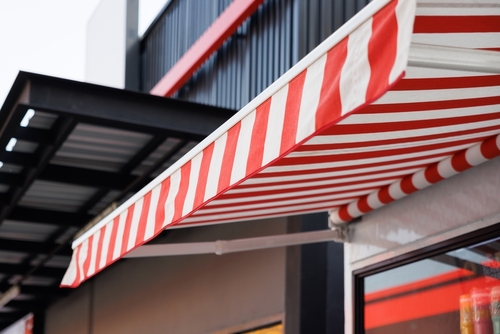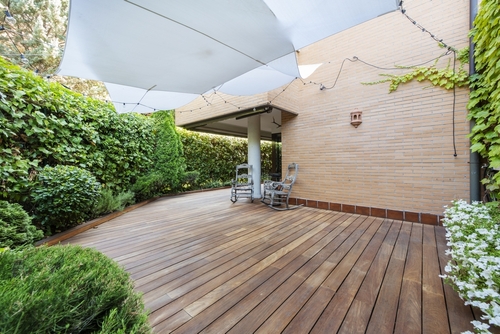
Choosing the Perfect Material for Your Outdoor Blinds in Singapore
September 20, 2023
Awning Safety: Ensuring Durability and Stability
December 5, 2023Aluminum vs Fabric Awnings: Which Is Right for You?
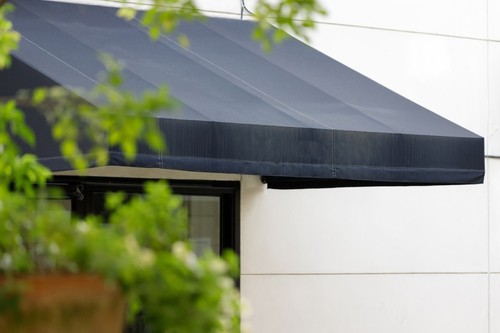
Aluminum vs Fabric Awnings Which Is Right for You
Aluminum vs Fabric Awnings: Which Is Right for You? In outdoor living spaces, awnings are pivotal in enhancing comfort and aesthetics.
These versatile structures provide shade, protect against the elements, and elevate your home’s or commercial property’s overall appeal.
If you’re considering the installation of an awning, one significant decision lies ahead – choosing between aluminum and fabric awnings. This comprehensive guide aims to assist you in making an informed choice that aligns with your specific needs and preferences.
Understanding Awnings
Awnings, in essence, are architectural extensions that extend over windows, doors, or outdoor areas.
Their primary function is to shield against sunlight, rain, and other weather conditions. Beyond their utilitarian purpose, awnings can transform outdoor spaces into inviting, functional areas, perfect for relaxation or entertainment.
Aluminum Awnings
Characteristics of Aluminum Awnings
Aluminum awnings are known for their sturdiness and resistance to various weather conditions. Crafted from lightweight yet durable aluminum, these awnings provide long-lasting protection.
Durability and Resistance to Weather Conditions
Aluminum awnings are built to withstand the test of time. They resist corrosion, fading, and damage from UV rays, making them a reliable choice, especially in regions with harsh weather.
Advantages and Disadvantages of Aluminum Awnings
Pros:
- Exceptional durability
- Low maintenance requirements
- Excellent protection against sun and rain
- Long lifespan
Cons:
- Limited customization options
- Can be prone to denting on impact
Fabric Awnings
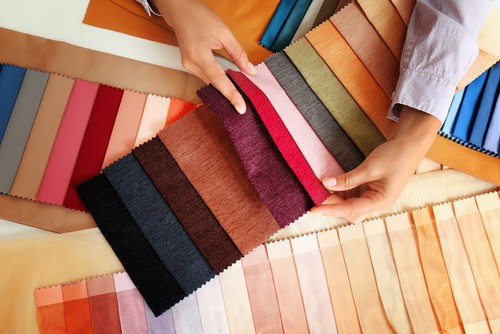
Characteristics of Fabric Awnings
Fabric awnings, on the other hand, offer a broader spectrum of design possibilities. They are versatile and come in various colors and patterns, making them an excellent choice for those looking to enhance their property’s aesthetic appeal.
Versatility and Aesthetic Options
Fabric awnings allow for creativity in design, enabling you to match them with your architectural style and personal taste. They also provide flexibility in terms of shape and size.
Advantages and Disadvantages of Fabric Awnings
Pros:
- Aesthetic versatility
- Customizable designs
- Soft and inviting appearance
- Lightweight and easy to install
Cons:
- Requires more maintenance
- Limited durability compared to aluminum
- Vulnerable to fading over time
Factors to Consider When Choosing Awnings
Climate and Weather Conditions in the Area
Assess the local climate and weather patterns. Durability may be a priority if you’re in an area with frequent rain or intense sun.
Desired Aesthetic and Design Preferences
Think about the look you want to achieve. Fabric awnings offer a broader range of design possibilities, while aluminum awnings provide a more streamlined appearance.
Budget Considerations for Awnings Installation
Determine your awning installation budget, including upfront costs and long-term maintenance expenses.
Durability and Longevity
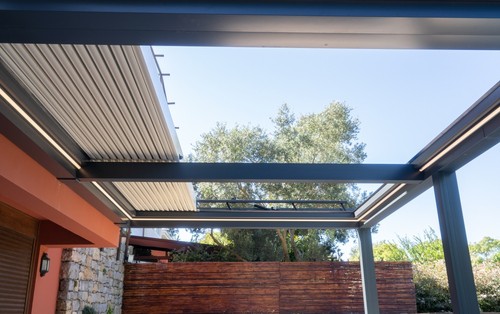
Compare the Lifespan of Aluminum and Fabric Awnings
Aluminum awnings typically have a longer lifespan than fabric awnings, making them a cost-effective choice in the long run.
Factors Influencing Longevity
Factors such as maintenance, climate, and quality of materials used can impact the longevity of your chosen awning type.
Maintenance Requirements
Both aluminum and fabric awnings require maintenance. Regular cleaning and inspection will ensure their optimal performance and appearance.
Energy Efficiency
How Awnings Contribute to Energy Savings
Awnings can reduce energy consumption by providing shade and lowering indoor temperatures during hot months.
Assessing Energy Efficiency
While both aluminum and fabric awnings offer energy-saving benefits, aluminum awnings may provide slightly better insulation.
Design and Aesthetics
Visual Appeal
Consider the visual impact of your choice. Aluminum awnings offer a sleek and modern appearance, while fabric awnings exude warmth and charm.
Complementing Architectural Styles
Evaluate how each type of awning complements your property’s architectural style. Fabric awnings can be customized to match various aesthetics.
Installation and Maintenance
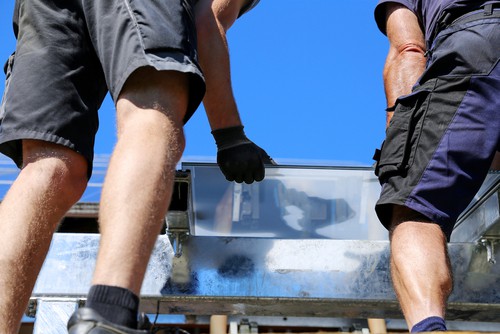
Installation Process
Professional installation is recommended for both aluminum and fabric awnings. However, DIY installation may be possible for those with adequate skills.
Maintenance Tasks and Cleaning Procedures
Regular cleaning and inspection are essential for preserving the beauty and functionality of your awning, regardless of the material.
Cost Comparison
Breakdown of Costs
Consider upfront costs, maintenance expenses, and potential repair costs when comparing the overall cost of aluminum and fabric awnings.
Long-Term Cost Considerations
While fabric awnings may have lower upfront costs, their shorter lifespan and maintenance needs could result in higher long-term expenses.
Environmental Impact
Eco-Friendliness
Aluminum awnings are often considered more environmentally friendly due to their recyclability and durability.
Sustainability
Consider the sustainability of your choice, including its impact on the local environment and energy usage.
Frequently Asked Questions (FAQs)
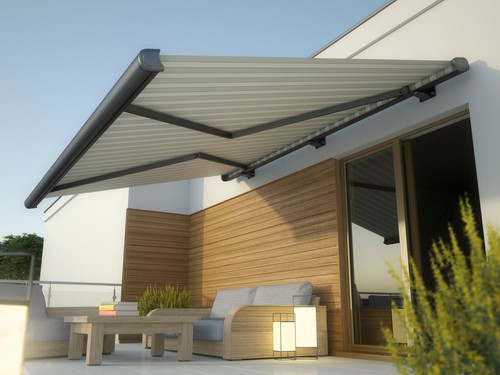
1. What are the primary functions of awnings?
Awnings primarily provide shade and protection against the elements while enhancing the visual appeal of your property.
3. Do aluminum awnings require special care in harsh weather conditions?
While aluminum awnings are durable, it’s advisable to secure them in extreme weather to prevent potential damage.
4. Are there different types of fabric materials for awnings?
Yes, a wide range of fabric materials is available, each with its unique properties and aesthetics.
5. How do awnings contribute to energy efficiency?
Awnings reduce indoor temperatures by providing shade, reducing the need for air conditioning, and lowering energy consumption.
6. Can I change the fabric on a fabric awning if I want a new look?
Yes, fabric awnings offer flexibility, and you can update the fabric to achieve a new look.
7. What is the typical lifespan of aluminum and fabric awnings?
Aluminum awnings can last for several decades, while fabric awnings typically have a lifespan of 10-15 years.
8. Are there any specific maintenance tasks for fabric awnings?
Regular cleaning and inspections are essential to maintain the appearance and functionality of fabric awnings.
10. Do awnings add value to a property?
Awnings can enhance the curb appeal and functionality of a property, potentially increasing its value.
11. What are some creative ways to incorporate awnings into outdoor spaces?
Awnings can be used to create outdoor seating areas, cover decks, and patios, or add shade to garden spaces, allowing for creative outdoor living solutions.
Aluminum vs Fabric Awnings: Which Is Right for You? – Conclusion
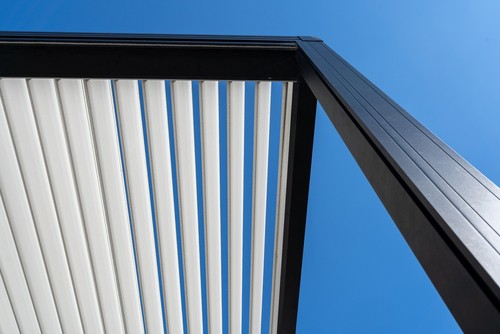
In summary, the choice between aluminum and fabric awnings depends on your specific needs and preferences.
Aluminum awnings offer exceptional durability and low maintenance, making them a practical choice for those seeking longevity.
On the other hand, fabric awnings provide versatility in design and can complement various architectural styles.
By considering factors such as climate, aesthetics, budget, and maintenance, you can make an informed decision that suits your unique circumstances.
Whether you opt for the timeless strength of aluminum or the expressive appeal of fabric, the right awning will undoubtedly enhance your outdoor living experience.
Are you seeking professional and reliable awning installation services in Singapore? Contact us today!



